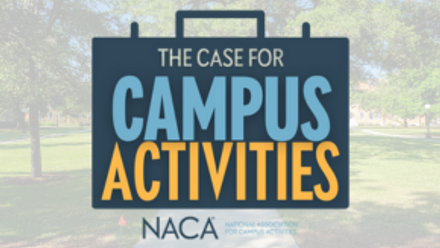Professional Development for Graduate Students
The professional development of graduate students is a unique responsibility for student affairs practitioners. As supervisors, mentors, and cheerleaders of these future full-time professionals we are all accountable to one another, and to our field, to serve these students with learning opportunities that foster their professional careers after graduation.
As the NACA® Central graduate intern mentor and the assistant director for student involvement at Texas A&M University-Commerce (TAMU-C), I provided various professional development experiences through the association and my institution to support the growth and development of our graduate interns in NACA and our TAMU-C graduate students. Below is an overview of how these grads and professionals across the country came together to enhance the educational opportunities for future student affairs practitioners.
Getting Started
The NACA graduate intern expectations allow for flexibility and creativity for the mentor and interns to work collaboratively in their learning and participation in the association. In conjunction with my role in TAMU-C, I also had the opportunity to create professional development opportunities for the graduate students pursuing careers in higher education in collaboration with our Leadership Department and Higher Education master's degree program.
In creating the curriculum for this program our leadership department, higher education professors, and campus partners worked together to determine an outline for the fall 2020 semester with a lunch and learn format via Zoom for all grads to attend and participate. Invitations were distributed throughout the student affairs division at TAMU-C, the higher education program, and the NACA® Central Region Leadership Team.
During the first meeting we described our mission and vision, and explored opportunities for learning and professional development in our virtual world. We also invited graduate students to fill out a short survey on their meeting preferences and what they wanted to gain from the program.
The responses from this survey helped illuminate opportunities for improvement in our planned curriculum. Through additional iterations the below curriculum was presented once per month over the lunch hour:
- Learning in a Virtual World
- Building Professional Confidence and Competence
- Panel with Student Affairs Directors
- Preparing for the Job Search
Expanding Involvement
A large part of expanding the program came with support from our Directors Panel. The graduate students from NACA and TAMU-C wanted to hear from seasoned professionals on what graduate students, as upcoming new professionals, could do to succeed in the field. By inviting directors from various functional areas and universities across the country, these directors also shared the invitation with their graduate students pursuing careers in higher education.
Participation continued to improve through word of mouth and we eventually gained 20 graduate student participants from six different universities, in five different states. A program that began with four NACA graduate interns expanded to a mini-cohort community of graduate students and professionals connecting one another with opportunities to succeed.
Moving Forward
As the program is in its infancy with only one semester under its belt, moving forward will bring new occasions to grow the program. Immediate plans include increasing institutional support from TAMU-C by sharing with more campus partners and additional divisions to encourage their graduate students to attend. Additionally, the NACA graduate interns expressed great appreciation for the continued professional development opportunities and encouraged the next NACA graduate intern mentor to provide similar experiences. Lastly, we want to ensure that quality connections can continued to be fostered during these lunch-and-learns. Whether by connecting graduate students in North Carolina with internships in Texas, providing resources for preparing for the job search, or simply building community among graduate students. These students will soon enter the field together and be able to find colleagues and friends across the nation.
It has truly been an honor to work with these students and provide resources for their growth and development. Additionally, I cannot thank enough my professional colleagues at TAMU-C and NACA for their continued support of this program. I am excited for the future of this program to develop graduate students as future student affairs professionals and hope that you too can find opportunities to support the graduate students on your campus.






